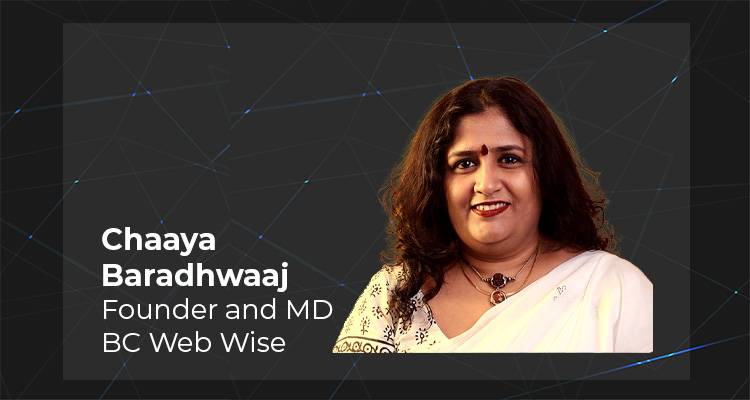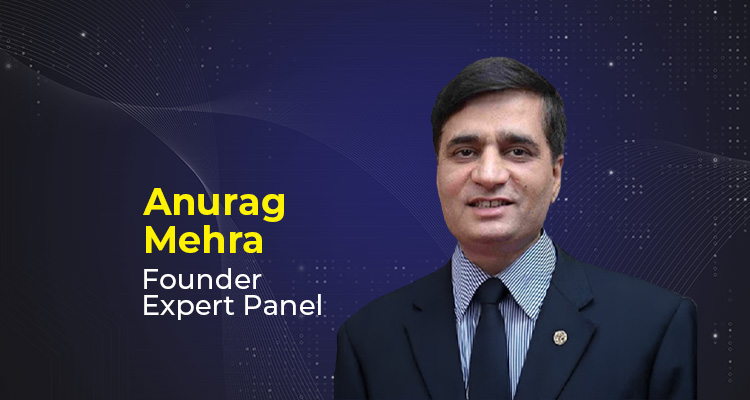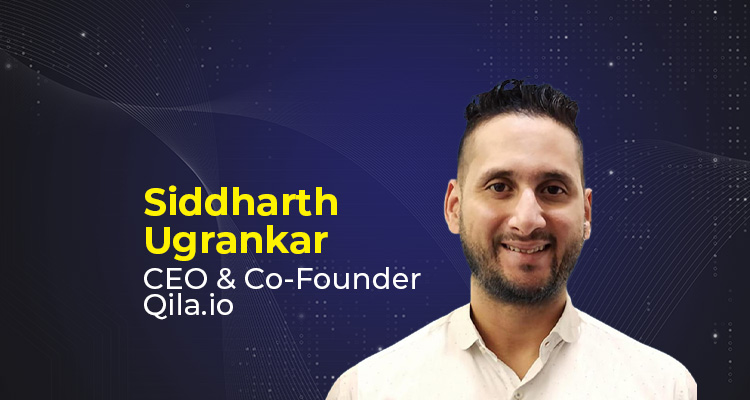Kindly share with us the journey that led to the inception of VuNet, and the inspiration behind creating a business journey observability platform.
In 2014, VuNet Systems was co-founded by Bharat Joshi, Jithesh Kaveetil and myself, drawing from over 15 years of experience in Research and Development (R&D), where we have worked together and designed, developed and deployed enterprise-grade data communication products for major telecommunications Multi-National Companies (MNCs) in the US, and also led to the design of a “Made in India” indigenous router platform for defence needs.
The idea for VuNet’s business journey observability platform emerged during a pivotal time when digital banking, online payments, especially United Payments Interface (UPI) and lending were experiencing exponential growth in India and globally. With customer satisfaction increasingly hinging on seamless digital experiences, there was a pressing need to closely monitor these digital journeys to prevent failures, accelerate transactions and mitigate revenue losses or customer churn. Since trust became the currency in a digital-first world, VuNet Systems was established to address these challenges and help enterprises enhance their customer experiences.
VuNet’s next-generation platform helps to build the digital guard rails and resilience for every enterprise. It provides unified visibility across business operations, Information Technology (IT) and customer experience, enabling financial institutions to reduce transaction failures, optimise processes, and deliver superior customer experiences.
What challenges did you face while transitioning from a corporate environment to founding and scaling a startup?
It has been a rewarding and exciting journey, though challenging too.
In a corporate setting, processes, systems and roles are clear. In a startup, everything is fluid. We had to quickly get comfortable with ambiguity, make decisions with limited information and wear multiple hats—from product ideation, product strategy to sales, marketing, customer support and more —all while driving teams to a shared vision. Building a talented team and culture from scratch, and finding the right people—who not only have the skills, but also resonate with the startup’s mission—was one of the hardest parts.
Coming from a corporate environment with abundant resources, adapting to the do-more-with-less mentality of a startup was a significant shift. This teaches you to prioritise ruthlessly – with none or very little in terms of a safety net.
Further, in the corporate world, the brand often opens doors for you. Here, we have had to build credibility from the ground up—both for the company and myself. Gaining the trust of customers, investors and partners required relentless focus to deliver value.
As founders, we were passionate about the long-term vision, but we had to learn to balance that with short-term execution. This meant focussing on immediate, tangible goals without losing sight of the big picture—a balancing act that was challenging but essential for scaling the business.
How does VuNet’s Artificial Intelligence (AI)-powered observability platform differentiate itself from traditional monitoring tools in terms of technology and impact?
The Covid-19-induced new normal has accelerated data and AI adoption manifold. Coupled with digital transformation and disruptions to traditional business models, you will see enterprises reimagining themselves, AI first.
The rapid growth of online payments has created immense opportunities for banks while presenting unique challenges in delivering a seamless customer experience across millions of daily transactions—a daunting task. For customers, completing a payment is just a click away, but behind the scenes, it triggers a complex network of interactions within the bank, spanning multiple applications and stakeholders, including acquirers, issuers and entities like National Payments Corporation of India (NPCI), MasterCard and Visa.
In this context, building a personalised, real-time view of customer journeys and proactively monitoring transactions for potential failures is vital. AI-powered predictive analytics play a pivotal role in detecting customer-experience degradations, identifying unusual transaction spikes and accelerating diagnosis and remediation. This not only enhances operational productivity, but also elevates customer satisfaction, providing banks with a significant competitive edge in an increasingly digital banking ecosystem.
VuNet’s AI-powered Business Journey Observability platform differentiates itself in three major ways. Firstly, unlike traditional monitoring tools that focus on IT metrics, VuNet provides a comprehensive view of business transactions and customer journeys, linking IT performance directly to business outcomes. This enables organisations to see the full impact of issues on critical business processes.
Secondly, the company delivers deep insights into transaction performance, tracing each transaction across multiple systems in real-time. This level of visibility helps businesses quickly detect and resolve issues, optimising success rates and improving customer satisfaction.
Lastly, VuNet’s platform is tailored for financial institutions, offering domain-specific features for instant payments, bill payments, lending and more. The platform’s ability to provide segmented cohort analysis by API, channel, merchant, payment service providers and regulator makes it relevant for the financial sector.
Observability is a growing field. How do you envision its evolution in the next five years, especially with advancements in AI and automation?
Transition should cover – unified observability, business observability, AI-led observability and observability to recommendability using Generative (Gen) AI. As observability continues to evolve and scale, the next frontier is in transitioning from “observability” to “recommendability” through the integration of AI/Machine Learning (ML) and Gen AI technologies.
AI/ML-based intelligent correlation and automated insights are crucial for this transition. These technologies enable real-time monitoring across physical, application and transaction layers, continuously analysing performance to detect unusual patterns that may indicate security breaches or system failures. By proactively delivering insights, AI/ML models allow for timely actions, preventing potential issues before those escalate, and ensuring operational and business resilience. Gen AI further enhances this capability by automating the synthesis of complex data into actionable insights. Gen AI can generate predictive models and scenarios, helping teams anticipate potential issues and recommend preventive measures.
Moreover, AI-driven automation can handle routine tasks such as log analysis, anomaly detection and basic incident resolution. This automation reduces the burden on human operators, allowing them to focus on more complex and strategic tasks. Over time, these systems learn from past incidents, continuously improving their recommendations and creating a self-improving cycle that enhances the platform’s overall resilience.
What steps does VuNet take to ensure the security and privacy of the vast amount of data it handles?
At VuNet, we understand the importance of security and privacy in today’s digital landscape. Since we work with the banking and financial sector, the safety and security of data and systems is paramount to our operations. The banking industry also has regulatory and
built-in stringent security requirements. We approach this from multiple ways:
• Data encryption: We ensure all data, both in transit and at rest, is encrypted using industry-standard protocols to safeguard it from unauthorised access.
• Role-Based Access Control (RBAC): Access to data is tightly controlled and limited to authorised personnel based on their roles and responsibilities, ensuring the principle of least privilege.
• Comprehensive monitoring: Our observability platform itself includes built-in mechanisms for monitoring and detecting anomalies or potential security breaches in real-time.
• Compliance and best practices: We adhere to globally-recognised standards like GDPR, ISO 27001, and PCI DSS to ensure compliance with data protection regulations.
• Secure development lifecycle: Security is embedded into our product development lifecycle through regular code reviews, penetration testing and vulnerability assessments.
• Customer empowerment: We offer features like data masking and tokenisation to help our customers control and protect sensitive information in their environments.
By combining advanced technology with a security-first culture, we ensure the data entrusted to us remains protected and private, enabling our customers to focus on delivering value to their end-users.
How do you see VuNet evolving as a leader in the digital-first age? Are there any upcoming features or projects you’re particularly excited about?
At VuNet, we see ourselves evolving as a pioneer in the digital-first age by bridging the gap between IT performance and business impact. Observability is no longer just about monitoring systems—it’s about making technology investments work harder for businesses.
We are particularly excited about three key areas shaping our future:
• Expanding Journey Workbench (JWB) for domain-centric observability: We are making it even easier to create domain-specific adapters while standardising transaction schemas. This ensures our observability platform remains vertical-agnostic and deeply contextual, allowing enterprises to gain sharper business insights from their telemetry.
• Bringing AI-first intelligence to enterprises: AI is transforming industries, but enterprise intelligence is fundamentally different from consumer AI—it requires governance, compliance, and secure data handling. We are designing Ved, domain-centric RAG/LLM models that allow enterprises to build agentic workflows on top of our platform, bringing AI-driven decision-making into observability.
• Introducing the SRE co-pilot for proactive IT operations: We are extending our Ved framework, with out-of-the-box domain-centric agents connecting into our observability platform. These agents assist IT operations and SRE teams by enabling faster troubleshooting and automated execution actions, making incident response smarter and more efficient.
With these innovations, we are redefining observability—not just as a tool for monitoring, but as a strategic enabler of business resilience. The future is exciting, and we’re just getting started.
With your interest in the future of payments, how do you think observability will play a role in revolutionising this space?
Observability is already transforming the payment ecosystem. With the rapid adoption of smartphones and affordable internet, digital payments have become an essential part of everyday life. UPI alone processes over 16 billion transactions per month, making seamless and uninterrupted service a necessity, not a luxury.
However, with this convenience comes complexity and risk. Imagine a customer at a grocery store checkout, cart full, only to have their UPI transaction declined due to an outage at their bank. These failures not only disrupt customer experience, but also cause banks to scramble for resolution—often without immediate clarity on whether the issue stems from network glitches, middleware failures, or third-party API downtimes.
This is where the VuNet framework on Observability, Transparency and Traceability (OTT) for digital-first enterprises, becomes a game-changer:
Observability provides deep insights into payment systems, helping financial services detect issues before they escalate. Transparency ensures real-time business and technical metrics, allowing financial institutions to proactively address failures and prevent cascading impacts. Traceability empowers customer support teams with real-time transaction tracking, reducing resolution times and improving customer confidence.
As India’s and the global banking sector embraces a digital-first future, the focus must be on building resilience, minimising disruptions and enhancing customer trust. Observability is no longer just an IT tool—it is the foundation for frictionless digital payments in an always-on world.
If you could go back and give one piece of advice to your younger self at the start of your career, what would it be?
Moving from a technical role to entrepreneurship means shifting from the comfort of coding to embracing people, uncertainty and constant learning. It’s no longer just about solving technical problems, but about navigating business challenges, building relationships and thinking at a much larger scale.
As Steve Jobs famously said, “It’s in Apple’s DNA that technology alone is not enough—it’s technology married with liberal arts, that yields us the results that make our hearts sing.”
I would tell my younger self to become more multi-dimensional—beyond just technical depth, cultivate business acumen, storytelling skills and the ability to adapt quickly.
editor@thefoundermedia.com




